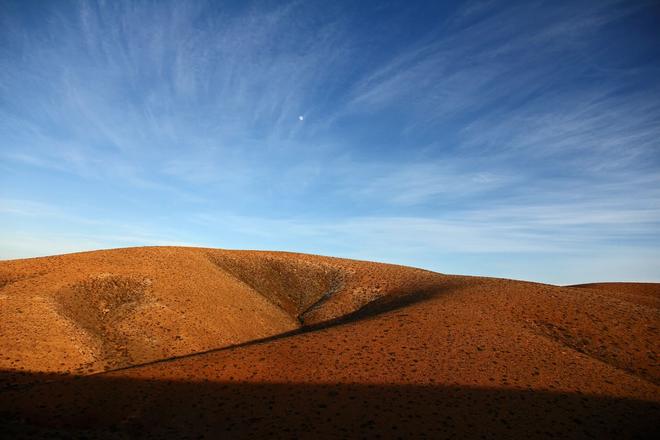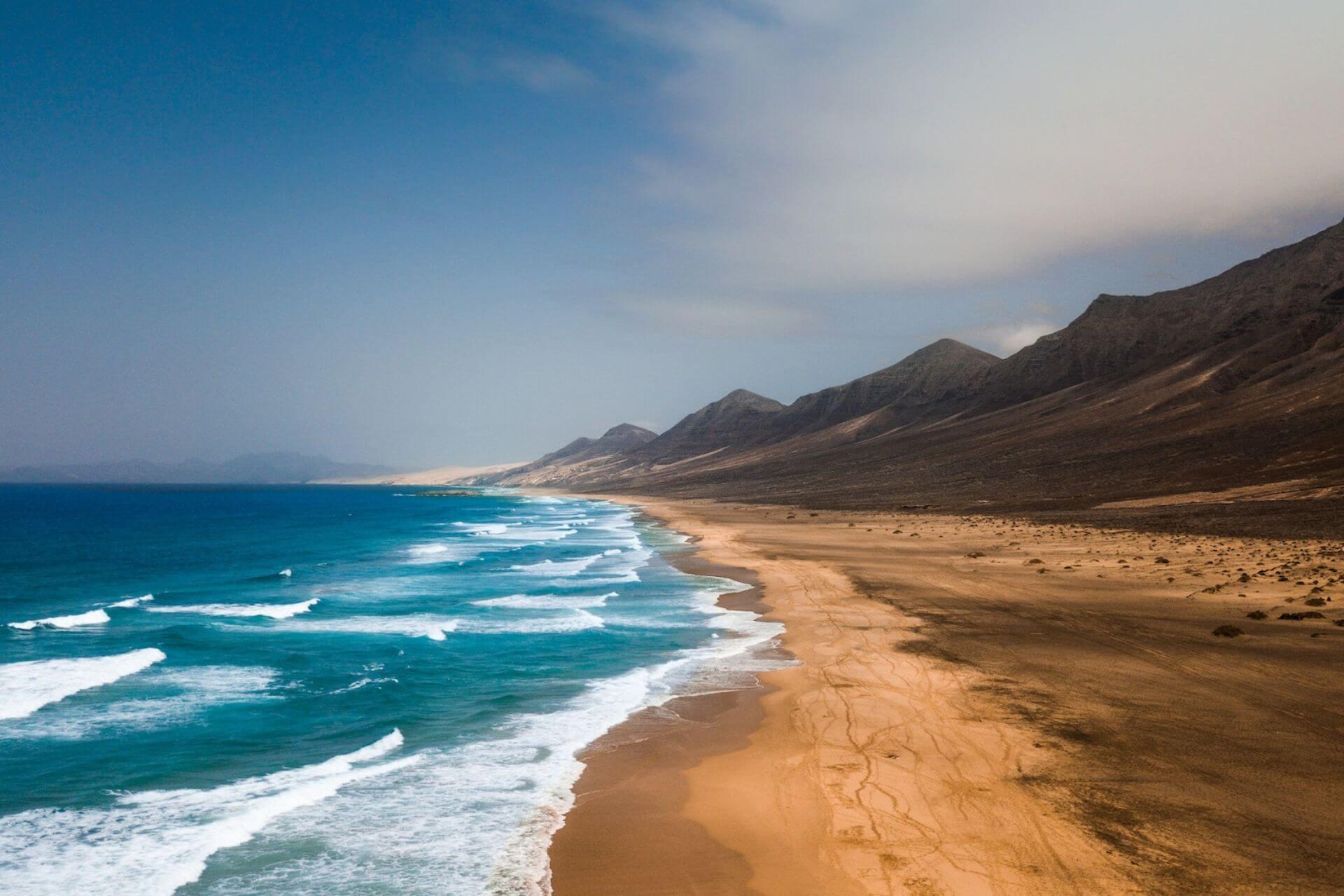The Spanish Canary Islands, of which Fuerteventura is a part, are generally known as a holiday destination for unpretentious tourists and sun-seeking golfers looking for a remote corner of Europe with acceptable conditions for their enjoyment during the cold autumn and winter months. From this perspective, however, Fuerteventura is a bit of an outlier. As the name suggests, loosely translated from Spanish as Windward Island, this destination is not exactly the ideal place to spend a family holiday on the beach, chasing golf balls around green fairways and greens, thanks to the ever-flowing Atlantic winds.
The magic of Fuerteventura
The name Fuerteventura is said to be a combination of the Hispanic words forte and viente, meaning strong wind, and there's a logic to it. The wind here does blow quite strongly, but not unpleasantly. It is counteracted by the high intensity of the sun's rays, which "rule" here more than three hundred days a year! Fuerteventura is completely different from the other Canary Islands – not least because it is the most deserted. All civilisation is found on the east coast of the country, within sight of Africa.
The island of Fuerteventura has a sandy-volcanic surface that covers practically its entire relief, so tourists will not enjoy any inland panoramas with varied views or moments of relaxation under the shady palm trees. So what is the magic of this island? It is its coastline. The western part is almost entirely made up of rocky cliffs occasionally interrupted by sandy beaches. The eastern coast, on the other hand, is practically all sand with a gentle entrance to the sea, thanks to the sand from the African Sahara. Fuerteventura is only 100 km from the African continent, to which it owes the conditions that prevail on the island. While it is true that the eastern sandy coastline with its winds is really popular with German seniors (no sultry tropical conditions), it has also become a surfers' paradise for the same reason. Especially those who have taken up windsurfing and, in recent years, kitesurfing. The west coast, on the other hand, with winds driving the waves towards the island, is the ideal place to practice classic surfing on the Atlantic waves.
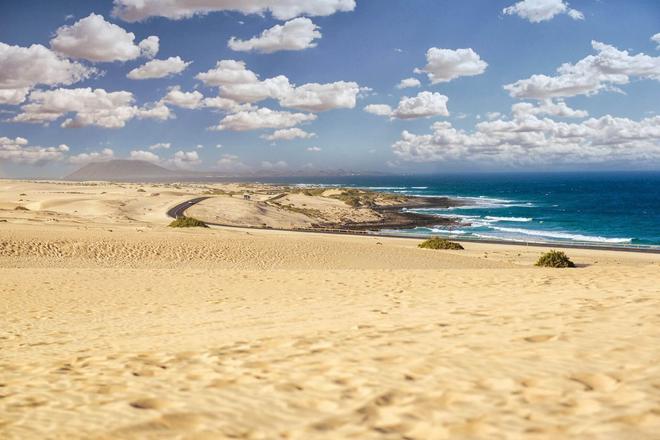
Where to surf
Water sports enthusiasts flock here from virtually all of continental Europe. It's not unusual to see caravans parked here with surfboards on their roofs bearing the number plates of various European countries, as it's possible to get here by ferry. It's a long and expensive journey, but if you're travelling as a family or a group of friends with all your windsurfing or kitesurfing gear, it's certainly an option.
The vast majority of visitors to the island, however, use the local airport in the capital Puerto del Rosario, where they either fly with airlines from their home countries or by local airlines from the neighbouring island of Grand Canaria, which is more widely visited due to its more ideal tourist conditions, and which is why it is also the final destination of most major airlines. From the airport, surfers can then head to the resorts that are best suited to their type of surfing.
To get around the island, it is best to rent a car at the airport. Virtually all surf equipment rental companies offer special rooftop surfboard holders for a fee, so there is no need to get a large car that can hold all the equipment. All surf resorts are packed with rental equipment, including wetsuits, because even the heated autumn waters of the Atlantic are still cold and will definitely come in handy when waiting for a wave.
As well as rental shops, there are schools for all types of surfing on the island. Fuerteventura has the advantage of being suitable for both beginners and professionals, who measure their strength in the local waves every year in the World Cup. The gently sloping eastern Atlantic beaches are mainly suitable for windsurfers and kitesurfers, while the flooded lagoons are also suitable for complete beginners, as they can reach the bottom practically everywhere and it doesn't take much effort to get back on the board. The west coast, even with waves of several metres, is ideal for classic surfers and for demanding kite surfers who have perfect control of their kites and can avoid the occasional reef peeking out from under the ocean surface.
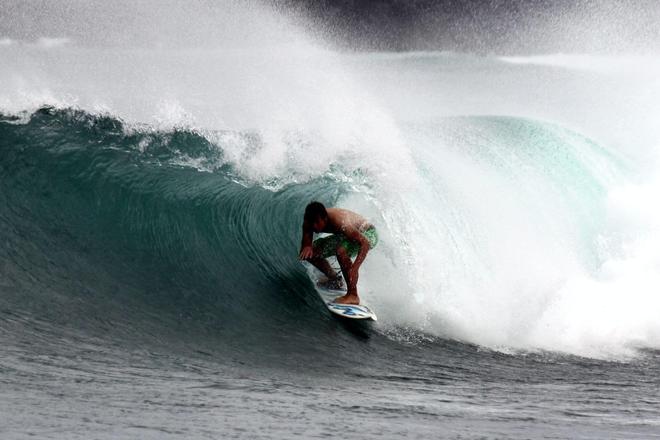
Ideal spots for different types of surfing
Ideal conditions for windsurfing are found on the south-east coast of the island between Costa Calma and Morro del Jable, especially the famous Playa de Sotavento, a beach with lagoons several kilometres long. The latter is also suitable for beginners and intermediate kitesurfers. The more experienced use the windier and more wave-ridden west coast, especially the beach adjacent to the town of La Pared. The latter is a popular spot for classic surfers thanks to its waves and varied coastal relief, and both experienced wave surfers and complete beginners can enjoy the experience in the hands of instructors.
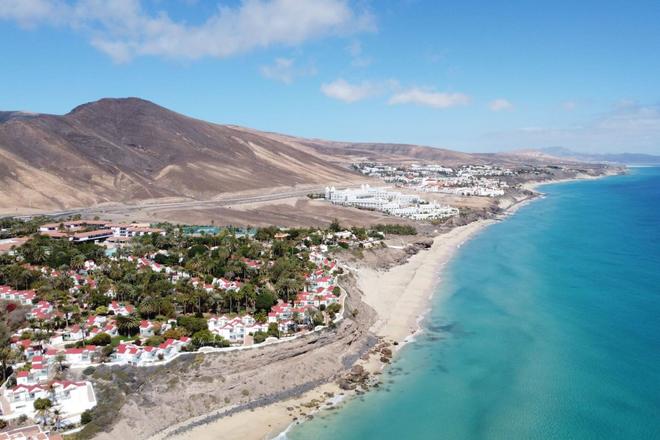
In the north of the island, one of the most famous surf spots is El Cotillo, where you can enjoy the sunset from the local surf bar. The north of the island is known for its surf resort of Corralejo, where those who have mastered the sails and kites of their equipment head to fully test their limits on the choppy, rolling waters.
Where to go after surfing
After a hard day in the Atlantic waves, surfers throw themselves into the nightlife at local surf bars, renowned for their friendly atmosphere and where it's possible to meet and network with surfers from all over the world. And you can do it over drinks made with the popular Canarian rum Arehucas.
An interesting gourmet experience, apart from the various types of fish from the ocean waters prepared in all sorts of ways, is the local speciality Papas arrugadas, which are slowly boiled small potatoes in their skins in strong salty water (which is boiled so that the potatoes are left with a salt crust) served with three types of mojo sauces. The sauces make them taste a little different in each area, but they are always absolutely delicious.
Where to go without surfing
As mentioned in the introduction, Fuerteventura doesn't offer much to explore apart from surfing, but there are a few places worth mentioning. If you don't want to leave the sea, it's possible to go on a catamaran cruise, you'll see dolphins every time, and the lucky ones may even spot whales. If surfers get tired of the eternal wind or high waves, it is possible to make several trips to the island to see the local beauty and rarities.
Travelling south to the Jandía National Nature Park and through the fishing village and local port of Morro del Jable, it is possible to reach the southernmost tip of the island, dominated by the Faro de Punta Jandía lighthouse. On the way back north at the level of Morro Jable, but on the west coast, there is the village of Coffete with its famous sandy beach, which is very dangerous due to the strong lower ocean currents and there have been several drownings.
The area is also famous for a local breed of goats, whose giant udders almost grind against the ground, and whose milk is used to make a variety of delicious cheeses. On the hillside above Coffete is the villa that sheltered Adolf Hitler during the winter months.
In the middle of the island is the former capital of Betancuria with its preserved historical buildings. Below the northern tourist centre of the island, the town of Corralejo, there is a natural park of the same name, which is interesting for its sand dunes, which are a constant reminder that the Sahara is only 100 kilometres across the Atlantic. And so that surfers don't get too rested, it is possible to ride down these dunes, as well as at Costa Calma, on a "sandboard", i.e. a small sand board resembling a smaller snowboard.
